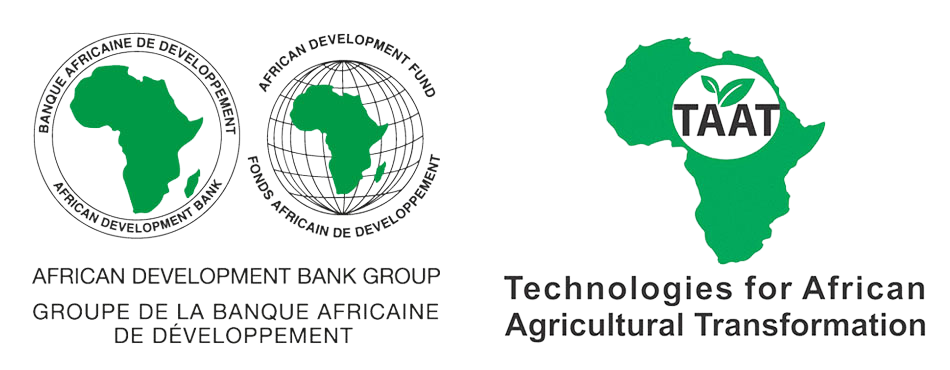From Waste to Wealth: How cassava peels processing technology is improving livelihoods in Nigeria
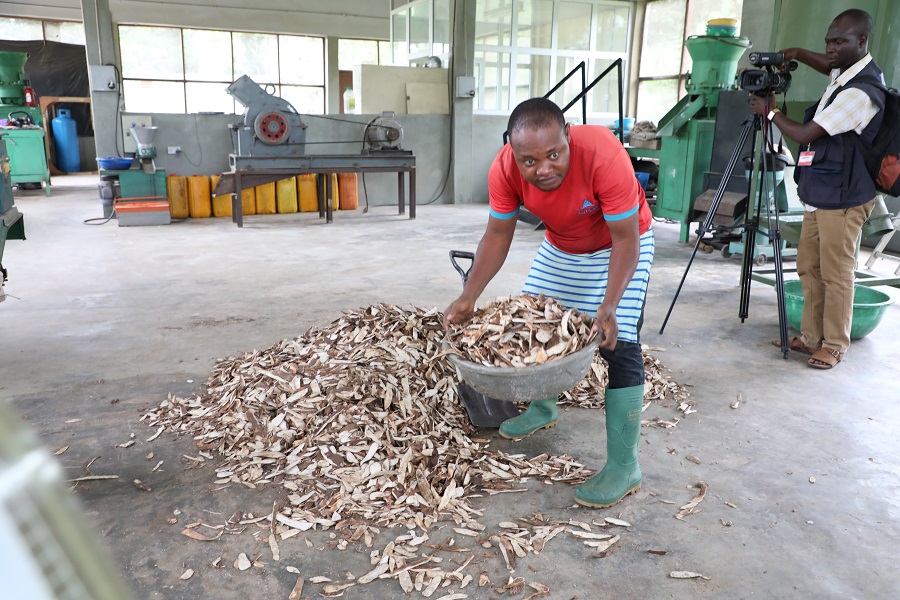
Nigeria is the world’s largest producer of cassava, with a yearly output of about 50 million tonnes.
Cassava production is projected to increase to up to 150 million tons by 2020. Nearly half of the quantity of cassava produced are processed into garri, elubo and other cassava-based staple foods.
For every ton of cassava processed, 10%-15%~125kg/tons, are lost in form of wet peels, which are poorly utilized, dumped as waste or burnt.
Hundreds of thousand women spend up to ten hours a day in various cassava processing centres, peeling cassava and earning less than $2.5 dollars a day.
From waste to HQCP
Cyanide from cassava waste peels significantly reduces soil microbial population, increases soil acidity and heavy metal content of soils around processing cites. This huge waste can be converted to useful livestock feed through the High-Quality Cassava Peels (HQCP) technology.
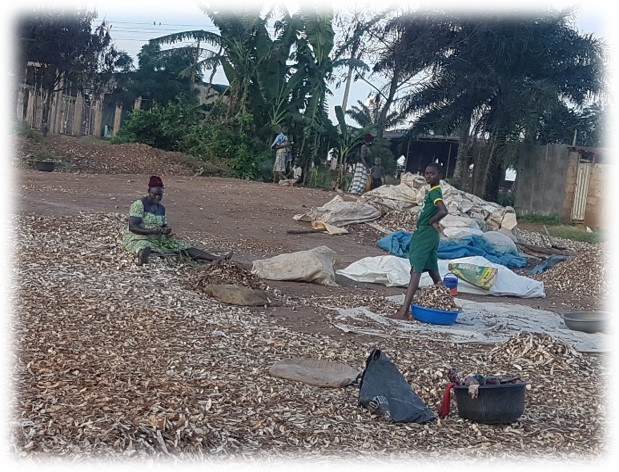
With funding from the African Development Bank (AfDB), the Livestock Compact of the Technologies for African Agricultural Transformation (TAAT) is working with International Institute of Tropical Agriculture (IITA), Synergos Nigeria and Business Innovation facility (BIF), to promote the uptake of the HQCP mash technology.
The partnership contributes to improving the economic life of rural women, enhancing value-addition of cassava peels in livestock and fish feeds and reducing the menace of environmental degradation.
In 2015, Consultative Group on International Agricultural Research (CGIAR) scientists, led by theInternational Livestock Research Institute (ILRI) developed low-tech methods which involve sorting, grating, pressing, pulverizing, sieving and drying, wet peels to transforming it into high quality, safe and hygienic animal feed.
The transformation of wet cassava peels into HQCP mash was an outcome of a multi-centre CGIAR collaboration including ILRI, (IITA) and the International Potato Center (CIP) and several CGIAR research programs: Roots, Tubers and Banana, Humid tropics and Livestock and Fish.
A demonstration and training centre for this technology was then established at ILRI, Ibadan. The technology is simple and builds on existing machines already being used in cassava tubers processing.
Grating and pressing facilitates rapid water loss and accelerate the elimination of hydrocyanide; further achieved during physical dewatering and overnight fermentation. The intermediate product, semi-dry mash (40% dry matter, down from 70% in fresh peels), is free from deterioration and contaminants and safe as animal feed.
This can be sun dried or flash dried, in a regular cassava processing factory using the conventional drying process, to a storable product 10-12% dry matter. Sun drying of wet peels poses the risk of high hydrocyanide content and mycotoxins contamination and discourages commercial use of the product.
In contrast, the HQCP technology, developed and packaged by ILRI, is a product that is safe and hygienic as livestock feed.
Prototype factories
Prototype HQCP factories have been established by Synergos in partnership with ILRI and the International Fund for Agricultural
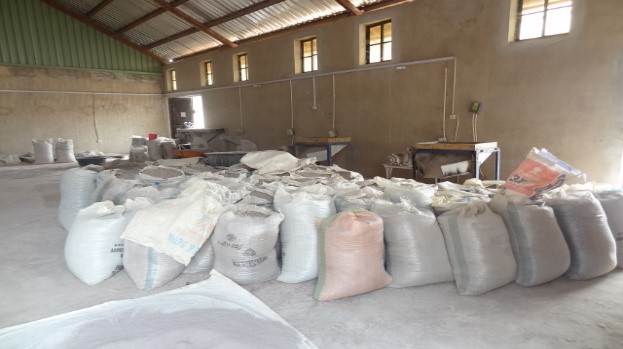
Development (IFAD) in Benue and Kogi States.
The HQCP wet cake, fine and coarse marsh are the key market products serving as ingredients in animal feed. Up to 25% maize in poultry feed can be replaced with HQCP fine mash.
There is a growing need in Benue and Kogi states, North-Central Nigeria, where the products have been promoted through the Oracle farm in Makurdi.
Promoting high-quality feed for the livestock industry
To gain commercial acceptance for the product, ILRI worked with Amo-Byng, Amo farm Sieberer Hatchery Ltd, in 2018 to conduct independent evaluation of the quality of cassava peels mash on broiler and layer chickens and beef cattle.
Layer and broiler birds fed the HQCP mash at a replacement rate of 60kg/ton, performed similarly on feed intake, conversion efficiency, egg production, growth rate and achieved 10-12% lower feed costs compared with control birds on maize based diet.
Rams fed 591g/d coarse cassava peels and cassava leaves attained average weight gain of 66.5g, while growing pigs receiving 30% HQCP mash diet achieved feed conversion ratio of 5.97.
HQCP mash as Fish Feed
Synergos market linkages support for the HQCP flagship product (fine marsh) led to identifying Premium Fish Feed limited, at Ikorodu in Lagos state, South-West Nigeria.
Premium Feed incorporates up to 60% of HQCP into the fish mash to produce excellent quality, 100% floating, non-leaching fish feed.
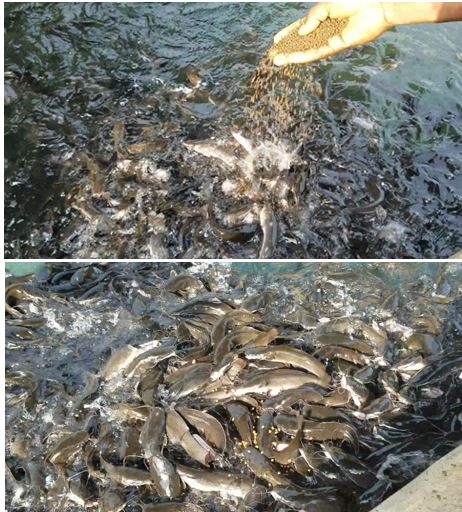
According to Premium feeds, fish fed with the fine mash feed have achieved a feed conversion ratio (FCR) of 1:1, compared with 1: 0.5 on conventional feed. Premium fish feed currently have a production capacity of 6,000 kg of feed daily with ample room for further expansion.
The company off-takes up to 6 tons of HQCP fine marsh weekly.
ATT Farms Makurdi, Benue State, is a livestock farm rearing pigs, chicken, fish and turkey. The farm buys HQCP from Oracle farms for livestock feeding.
The pigs are, fed an average of 50kg coarse marsh weekly while the turkey birds are fed on the fine marsh.
Another initiative of the TAAT livestock compact was the training of Certified Master Trainers by BIF and Synergos, for Quality Assurance and more organized HQCP mash production.
To date 120 entrepreneurs and 20 certified trainers have been trained at the ILRI HQCP model centre at IITA, Ibadan. Synergos and ILRI are leading efforts to establish three additional cassava peels processing facilities in Kogi, Benue and Ogun states of Nigeria
More hectares of cassava from Governments
Bolstered by the opportunity that the processing of cassava peels offers for poverty alleviation and women empowerment, the Benue and Kogi state governments have supported entrepreneurs to establish 10,000 hectares of cassava farm.
In an effort to create more awareness of the HQCP mash technology, the Oyo State government in collaboration with the ILRI and the Raw Materials Research and Development Council (RMRDC), Nigeria, convened a stakeholders forum tagged “Waste to Wealth: Cassava Peels Utilization’’ in 2018. https://www.primepost.ng/2018/12/14/oyo-rmrdc-research-institute-move-to-encourage-cassava-peel-utilisation/.
In addition, Five Nigerian states including Abuja have been mapped with potentials to process cassava peels to HQCP.
HQCP as win-win technology
If properly harnessed, the technology has the potential to add around 15 million tons of quality feed to the livestock sector. The economic potential to the feed industry in Africa hovers around 2 billion dollars a year.
According to Sam Yuuha of Oracle farms Ltd in Benue state,“our cattle now eats processed cassava peels” One cannot think of a better way to use the cassava peels in livestock feed, other than this initiative of processing the peels into High Quality Cassava Peels (HQCP).”
“Coarse marsh is very effective as an ingredient,” Yuuha added.
At Ojapata processing cluster in Kogi state, Ali, a male farmer appreciates the use of HQCP as a component of livestock feed. “It allows us to use cassava waste (raw materials) that are available everywhere in cassava processing communities.” “Also, we are learning new ways to use the HQCP as animal feed,” Ali added.
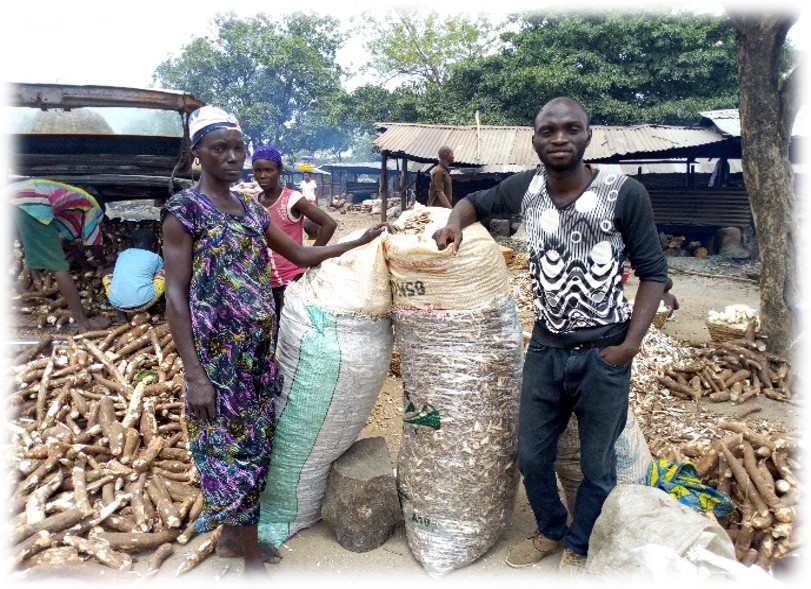
It will also contribute to reducing current import bills on maize, mitigate current tension of grazing resource access in some countries, reduce environmental pollution from wet peels and create employment and incomes for cassava processors mostly women in the unorganized sector.
The impact on environmental pollution can be significant and requires an impact assessment study to be conducted.
The HQCP technology has enhanced increased utilization of wet cassava peels. With production currently at 10 tons wet peels per week in the few factories, when fully operational, the targeted factories in Nigeria will produce up to 20 tonnes of high-quality animal feed ingredients annually.
The new processing factories will improve income and the livelihood of 60,000 women, through higher income from selling processed wet peels.
Increased household income becomes noticeable, as more women peeling cassava are also the ones selling the fresh cassava peels for at least NGN 10 (Nigerian Naira) per kg. “I have tried to sell the HQCP cake and the market demand is rising”. Jumai, a female cassava peel worker at Ojapata Processing Cluster in Kogi state said.
The cost of unprocessed wet peels is currently at $1.4 per kilogram, compared with $2.7, $4.2 and $7 respectively for the semi-dry, dry coarse and the fine mash respectively.
The TAAT programme is supporting women cooperatives to own the HQCP processing machines so that they can reap the full benefits of the technology.
